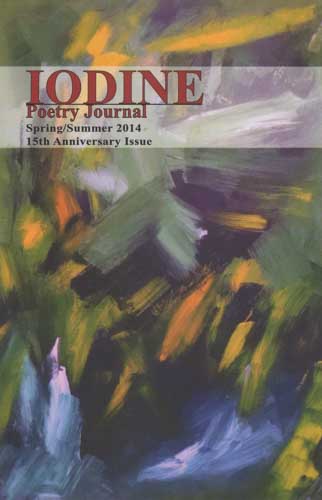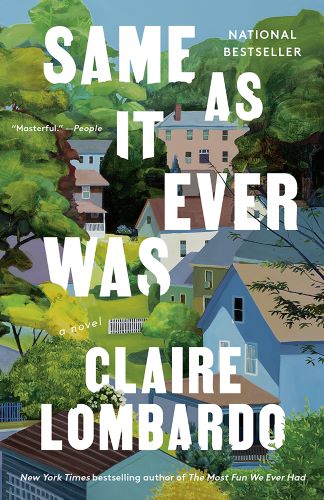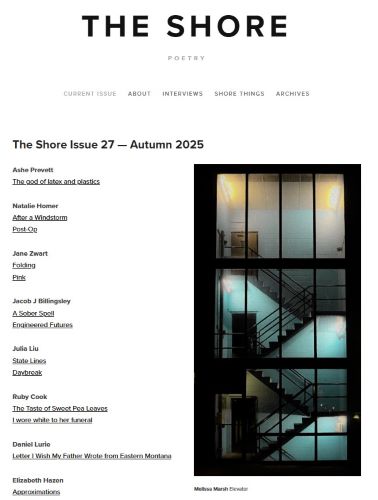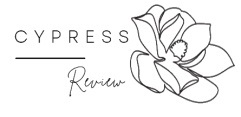This 15th Anniversary Issue of Iodine Poetry Journal is a collection of unassuming poems by talented writers. The poems are deceptively simple, written with an ease that belies their metaphoric skill. Each poem imagines a story, a picture, a memory, a season, a way of thinking or living, encapsulated in lines of distilled thought that somehow feel like one collective voice of humanity speaking for itself. This 15th Anniversary Issue of Iodine Poetry Journal is a collection of unassuming poems by talented writers. The poems are deceptively simple, written with an ease that belies their metaphoric skill. Each poem imagines a story, a picture, a memory, a season, a way of thinking or living, encapsulated in lines of distilled thought that somehow feel like one collective voice of humanity speaking for itself.
Forms of the word “dream” appear in a few titles throughout the collection, and I immediately turn on my radar for clichés. Five of the poems have a transformative quality that aims to transport readers to that dream state where alpha waves let images in that break the expected rules of perception, and most of these poems succeed. An image of a
prostrate form,
huddled beneath
a quilt sewed
carefully long before
by now dead hands
on ivory keys
wafts from Richard Dinges, Jr.’s “Dreams Echo,” a short, profound poem in a single sentence. I can see the “handsome stranger in black who rides” in Torie Amarie Dale’s prose poem “Today, I Dream,” which describes a daydream turned sour by reality. “Sapphire Dreams” by Arlene L. Mandell offers another image “. . . under feather quilts / in our indigo room . . .” the dream state apparent in the language of sleep.
A few poems in the issue explore form and function and the purpose of structure in making meaning. Diana Pinckney’s “After the Hands” is a poem that presents a staircase of images, one following another down to the finish:
what can
the body do
but sing
Jennifer Cunningham asks the question “What Will Be Left?” in her villanelle that pleases the poetic senses with rhyme and meter. The refrain answers, “There will be nothing left to claim, to name. . . . / Only a skinless echo will remain.” Brian Clifton explains that “It is Not the Lion that Eats the Soul,” and Celisa Steele expounds on the realities of motherhood in “Mother and Child.” A.S. Bean wonders “if water / feels the fall,” and Maria Berumen-Hooyenga depicts “The Barren Season” of menopause as “Three hundred sixty-five days / absent red x’s.’” These poems demonstrate skill in breaking lines at just the right words and in using punctuation for the best effect. Form serves the function of these poems and others in the issue.
A few poems surprise with images unanticipated that strike unusual chords, where surreal elements play a role in the poets’ risk taking. In Mike James’s “A Lobster,” the image of a lobster “replete with his buttery splendor” converses with the speaker in a captivating stanza that I find myself revisiting. Similarly, and also quite differently, Errol Miller’s “Pea Soup” contains fascinating images of a peacock, a horse, trees, and tea cakes all in one poem without mentioning the pea soup. Dennis Herrell personifies the color in “Yellow,” ending with the perfect admonition, “Don’t trust yellow—it will turn on you.”
Finally there are a few poems I have fallen in love with in that way that one falls in love with something or someone and doesn’t quite understand why. I am in love with “Frida Kahlo, Punk Hero,” by Kayla Sargeson and the lines
I want to live underneath your dress,
cling to the thick part of your thigh,
become the sweet fruit Diego couldn’t live without
and every man and woman who met you craved.
I am in love with Carol Pearce Bjorlie’s “Vocalise” for its music and the dark cave “where trolls sleep.” And I am head-over-heels in love with Alan Michael Parker’s “IOU A Love Poem” for its repetition, its cadence, and its longing in repaying that debt.
I would recommend reading a few poems at a time from this anniversary issue of Iodine Poetry Journal, then mulling them over as you progress through your day, returning to a few more at another sitting and finding an image or metaphor that tides you over until next time.
[www.iodinepoetryjournal.com]





